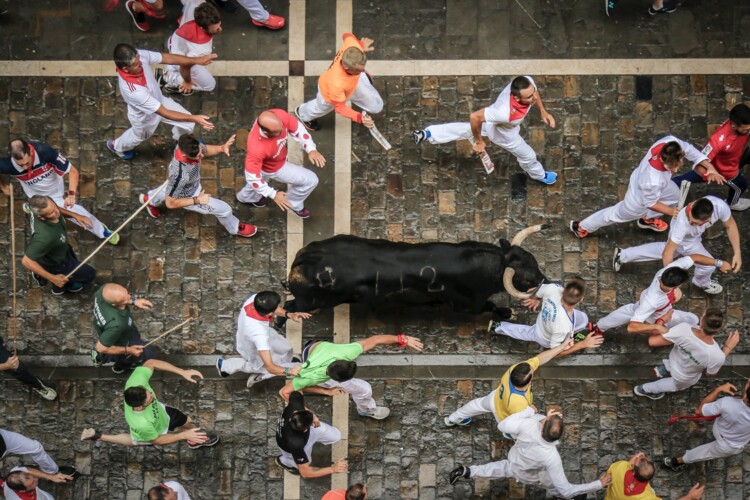Participants
2 à 7 persones
Prix
2 people: 455€
Extra person: +105€
Child (10-17): +65€
Children under 10: free
For groups bigger than 6 people contact us
2 à 7 persones
2 people: 455€
Extra person: +105€
Child (10-17): +65€
Children under 10: free
For groups bigger than 6 people contact us
8h à 9h
INCLUDED
Professional local guide, transport and water.
LOCATIONS
Saint Jean Pied de Port, Saint Etienne de Baigorry, Bidarray, Espelette, Ainhoa
This is the only the beginning
Saint Jean Pied de Port has been watching pilgrims go to Santiago for more than 1,000 years. Some are getting nervous because one of the hardest and most complex stages of the entire French section of the Camino, los puertos de Cize, awaits them. You have nothing to fear because, although the town hides a few slopes, we’ll calmly show you the cobbled and medieval streets of Saint Jean, the Romanesque cathedral, the stone bridge over the River Nive and the 17th-century citadel.
Time to pray
The river Nive will lead us to our new destination: Bidarray, with its medieval church built of the pink stone characteristic of this area, rising up in the highest part of town and characterized by its portico. Why a porch? So that the faithful can meet for chats (before or after mass), covered and safe from the rain so frequent here (whence comes the lush green landscape…).
Land of Chilis
Espelette would be just one more adorable town in the south of France, with its cobbled streets and white houses with brightly colored picture windows, if it weren't for a distinguishing fact: in the 16th century, someone brought small peppers from South America and discovered that the climate of the area was ideal for their cultivation. Little by little, Espelette chilis were introduced into Basque-French cuisine, replacing other spices that had to be bought abroad, such as paprika and black pepper, and turning the town's balconies into makeshift drying rooms. Where shall we go? Very simple: to the restaurant where we’ll taste delicious French specialties, family-owned and operated for five generations (since the 17th-century!), and where we’ll discover why they bless the Espelette pepper.
Headstones on Main street
Ainhoa is a very common Basque name. It’s also the name of one of the most beautiful villages in France. This beauty is evident the minute you set foot here: a street flanked by immaculate houses, and an atmosphere so relaxed that the headstones of the local cemetery are located in the very center, next to the church of Nuestra Señora de la Asunción (of course we’ll catch the Gregorian chants) and the town frontón. We’ll also see some examples of houses built by “los Indianos” (Basque emigrants who made their fortunes in the Americas in the 18th and 19th centuries) upon their return to the village.
